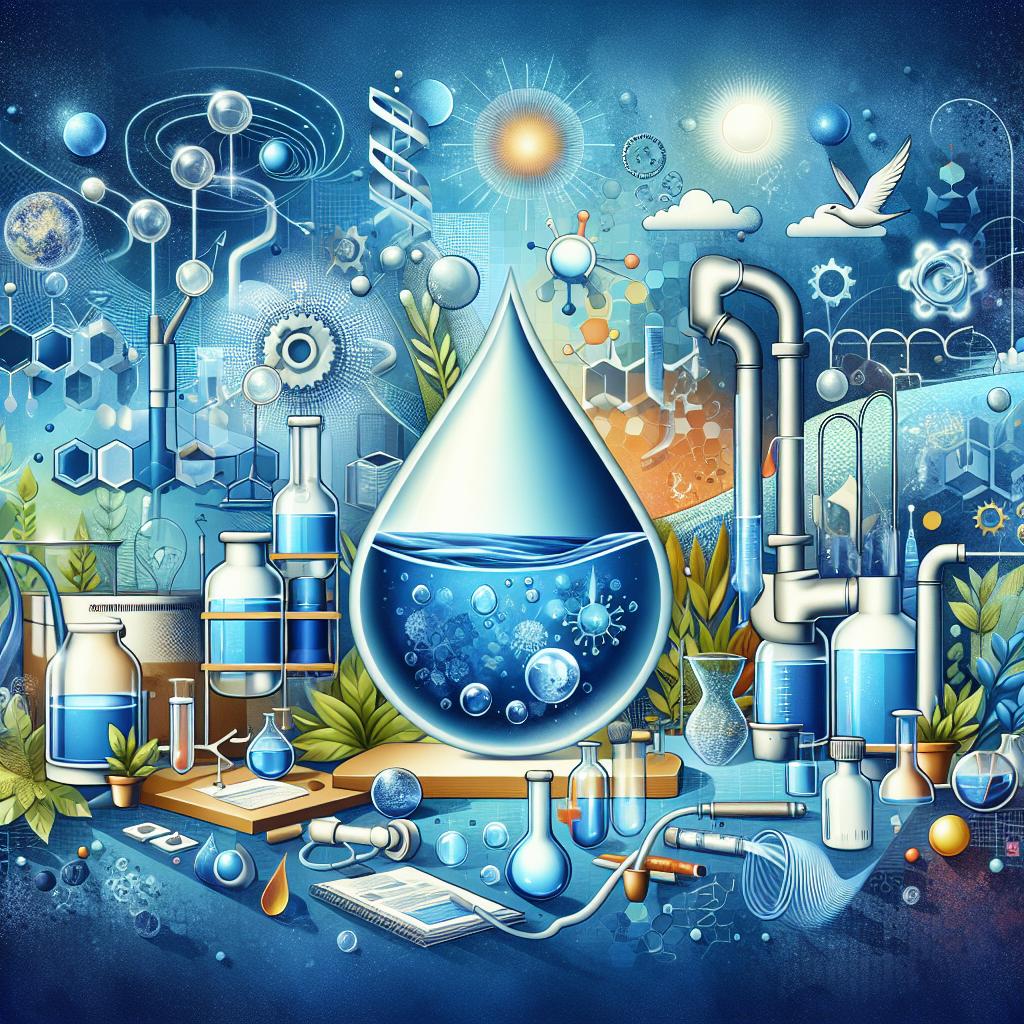This post may contain affiliate links which means I may receive a commission for purchases made through links. Learn more on my Private Policy page.
Welcome to the lush world of farming, where the rhythm of nature dances to the tune of soil, water, and sunlight. As every seasoned farmer knows, the secrets to lush crops and bountiful harvests lie not only in hard work and dedication but also in understanding the intricate balance of environmental factors that influence plant health. Among these, salinity and pH levels play pivotal roles in the success of farm irrigation techniques. Imagine your farm as a delicate ecosystem, where every droplet of water matters, and the very chemistry of the soil can spell the difference between a thriving paradise and a struggling patch of land. In this article, we’ll explore how salinity and pH levels can impact your irrigation strategies, uncovering the science behind these crucial elements while providing practical tips to help you cultivate a flourishing harvest. So, grab your straw hat and let’s dig into the delightful complexities of nurturing your crops to their fullest potential!
Understanding Salinity: The Hidden Threat to Crop Health
Salinity is often an overlooked factor in agricultural productivity, yet it poses a significant risk to the health of crops. Excessive salt in the soil can lead to a range of problems, including reduced plant growth, impaired nutrient uptake, and increased susceptibility to diseases. This situation can be exacerbated by poor irrigation practices, which may inadvertently increase salt concentrations over time. Understanding the salinity levels of your soil is crucial for effective crop management, as it allows farmers to implement strategies that mitigate this hidden threat.
To effectively address salinity, farmers should consider monitoring both the salinity and pH levels of their soil and irrigation water. Implementing practices such as:
- Soil Testing: Regular assessments can guide you in understanding the baseline salinity levels.
- Alternative Irrigation Techniques: Drip or subsurface irrigation can minimize salt buildup.
- Amendments: Organic matter and gypsum can help improve soil structure and reduce salinity.
Here’s a simple table outlining salinity levels and their corresponding effects on crop health:
| Salinity Level (dS/m) | Effect on Crop Health |
|---|---|
| 0-2 | Optimal Growth |
| 2-4 | Slight Growth Reduction |
| 4-8 | Significant Growth Issues |
| 8+ | Severe Damage or Death |

pH Levels Matter: How Soil Acidity Shapes Irrigation Practices
Understanding pH levels is crucial for effective irrigation management on your farm. Soil acidity can significantly influence not only plant growth but also how your irrigation practices should be tailored. In acidic soils, certain nutrients become less available to plants, leading to deficiencies that can affect crop yield and quality. When assessing your irrigation strategy, consider the following factors impacted by soil pH:
- Nutrient Availability: Certain essential nutrients, such as phosphorus and calcium, are more accessible in neutral soils. Acidic conditions can lock these nutrients away, making it vital to adjust your fertilization and irrigation levels accordingly.
- Soil Microbial Activity: A balanced pH supports beneficial microbes that aid in nutrient cycling and health. Irrigation practices that promote this balance can lead to more sustainable farming.
Moreover, understanding how to measure and manage soil acidity can help you refine your irrigation techniques. Regular pH testing allows you to monitor changes and adapt your practices over time. Incorporating amendments like lime can improve soil pH and enhance water retention, ultimately leading to healthier crops. Here’s a quick reference table for understanding how soil pH affects common crops:
| Crop Type | Optimal pH Range | Impact of Low pH |
|---|---|---|
| Corn | 5.8 – 7.0 | Reduced growth and yield |
| Soybeans | 6.0 – 7.0 | Poor nodulation and nitrogen fixation |
| Potatoes | 5.5 – 6.5 | Scab disease prevalence |

Tailoring Your Water: Crafting Solutions for Salty and Acidic Conditions
When dealing with the challenges of irrigation in coastal or saline-prone areas, customizing your water source becomes essential. Understanding the salinity levels of your irrigation water helps in devising effective strategies to ensure crop health. Consider the following tactics to tailor your water for better irrigation results:
- Freshwater Blending: Mix saline water with freshwater to dilute the salinity, ensuring your plants get the right balance.
- Soil Amendments: Integrate organic matter or gypsum to enhance soil structure and improve its capacity to handle saline conditions.
- Drip Irrigation: Use drip systems to minimize water contact with saline soil, allowing for targeted application where plants need it most.
Equally important is addressing acidic conditions, as soil pH significantly affects nutrient availability. Crafting your water’s pH level may involve the following approaches:
- Buffering Agents: Utilize limestone or other alkaline substances to naturally increase the soil pH.
- Regular Testing: Conduct frequent soil tests to monitor pH levels, adjusting your strategy as necessary.
- Microbial Inoculants: Introduce beneficial microorganisms that can help neutralize acidic soils over time.
| Water Treatment Method | Benefit |
|---|---|
| Freshwater Blending | Reduces salinity and improves plant health |
| Soil Amendments | Enhances soil structure for better water retention |
| Drip Irrigation | Minimizes salinity exposure to plant roots |

Best Practices for Mitigating Salinity and pH Challenges in Irrigation
To effectively manage the challenges posed by salinity and pH levels, it is essential to adopt a combination of proactive and reactive strategies. Regular monitoring of water quality is crucial; testing salinity and pH levels at different points throughout your irrigation system will allow you to identify potential issues early. Consider implementing a buffering system that can adjust the pH levels before water reaches your fields. Installing drainage systems can help leach out excess salts, while rotating crop types can also maintain soil health and reduce the risk of salt build-up. A dedicated salinity management plan tailored to your specific soil and crop needs can create a productive environment for growth.
Utilizing organic amendments, such as compost or biochar, can significantly enhance soil structure, promoting better water infiltration and reducing salinity effects. Additionally, mulching your crops can help in reducing surface evaporation, thereby minimizing salt accumulation. Equally important is to employ efficient irrigation techniques such as drip or subsurface irrigation to deliver water directly to the plant roots, reducing excess runoff and salinity uplift. Below is a simple table to illustrate some key strategies:
| Strategy | Benefits |
|---|---|
| Regular Water Quality Testing | Early detection of issues |
| Installation of Drainage Systems | Reduced salt accumulation in soil |
| Using Organic Amendments | Improved soil health and structure |
| Efficient Irrigation Techniques | Minimized water loss and salinity impact |
The Conclusion
As we wrap up our exploration of salinity and pH levels in farm irrigation, it’s clear that understanding these elements can be the difference between a thriving crop and a struggling field. Just like a balanced recipe brings out the best flavors in a meal, the right salinity and pH levels create the perfect environment for your plants to flourish.
Before you head out to the fields, remember that knowledge is your best tool. Regular testing and adjusting can help you maintain those ideal levels, ensuring that your irrigation system works harmoniously with nature rather than against it.
So, whether you’re a seasoned farmer or just starting on your agricultural journey, keep this information in your back pocket as you nurture your land. Cultivating a deeper understanding of your soil’s chemistry will not only yield healthier crops but also foster a more sustainable future for farming. Here’s to happy plants, bountiful harvests, and a deeper connection to the land we cherish. Happy farming!
This post may contain affiliate links which means I may receive a commission for purchases made through links. Learn more on my Private Policy page.

